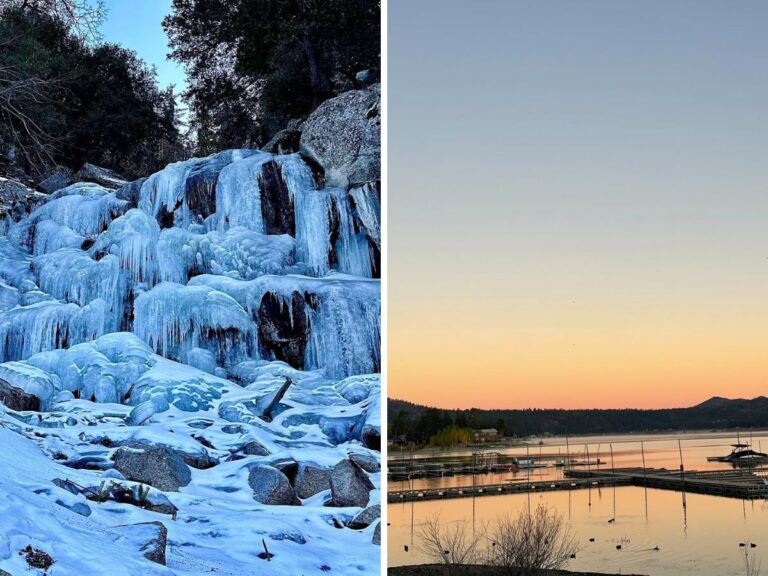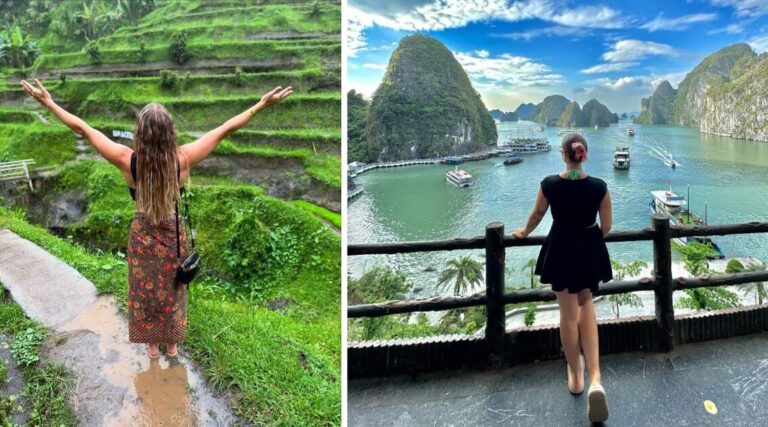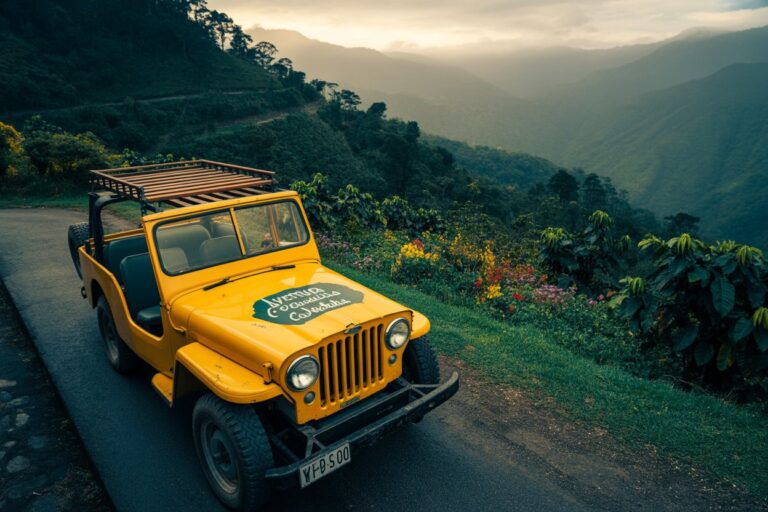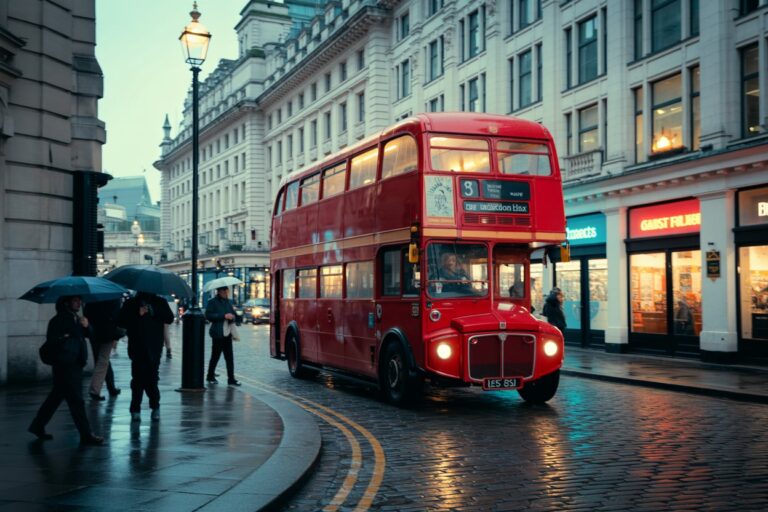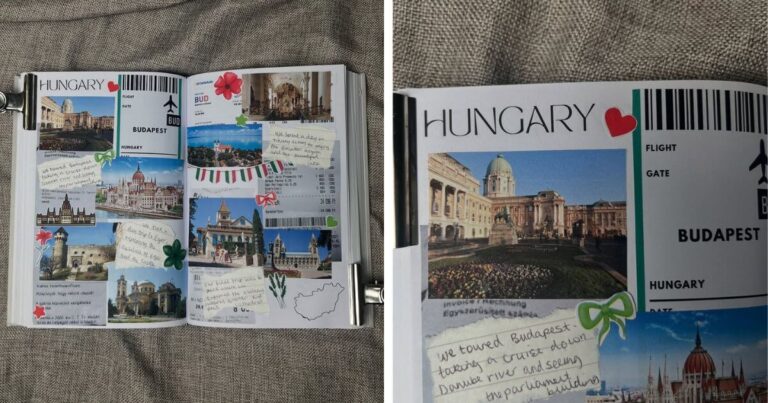The Ultimate 2-Day Yosemite National Park Itinerary
The first time I drove into Yosemite, I didn’t plan much. I figured two days would be enough to “wing it.” By noon on day one, I was lost in the crowd, stuck in parking loops, and staring at closed trails I didn’t even know existed. I left feeling like I’d only skimmed the surface of something massive.
That trip changed how I think about travel. I stopped chasing random viewpoints and started designing my days with intention — less rush, more awe. The next time I returned to Yosemite, I built a plan that turned two days into a full, soul-stretching experience.
This guide comes straight from that shift. It’s not about stuffing your itinerary with every landmark; it’s about choosing the right ones, timing them smartly, and leaving space to breathe it all in.
Inside, you’ll find my personal two-day Yosemite plan — sunrise spots, easy hikes, hidden corners, and a few pro tips I wish I’d known sooner.
Whether you’re visiting for the first time or coming back for a weekend recharge, this is the route that makes Yosemite unforgettable without feeling rushed.
Day 1 – Waterfalls, Valley Views & Yosemite Icons
Morning
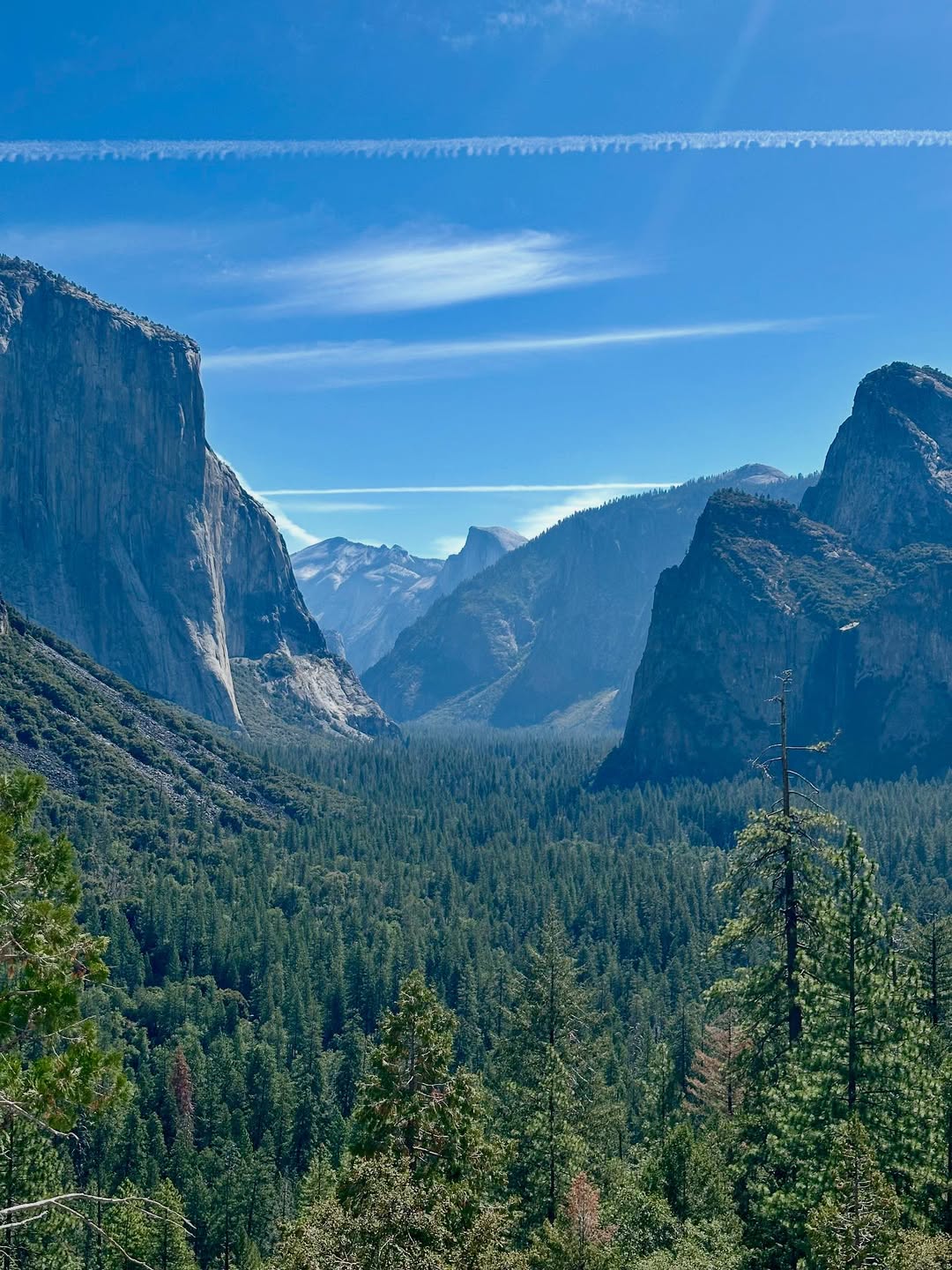
Start early at Tunnel View and watch sunlight sweep across El Capitan and Half Dome. The first rays turn granite gold, and for a minute the whole valley glows.
National Geographic calls it one of the most breathtaking overlooks in any U.S. park.
Warm up with a quick walk to Bridalveil Fall. The trail is short, mist fills the air, and it’s a gentle way to wake your senses. Grab breakfast afterward at Yosemite Valley Lodge—their café opens early enough that you’ll beat the rush.
Pro tip: take your coffee to go and sip it at Tunnel View; mornings up there are colder than you’d expect.
Midday
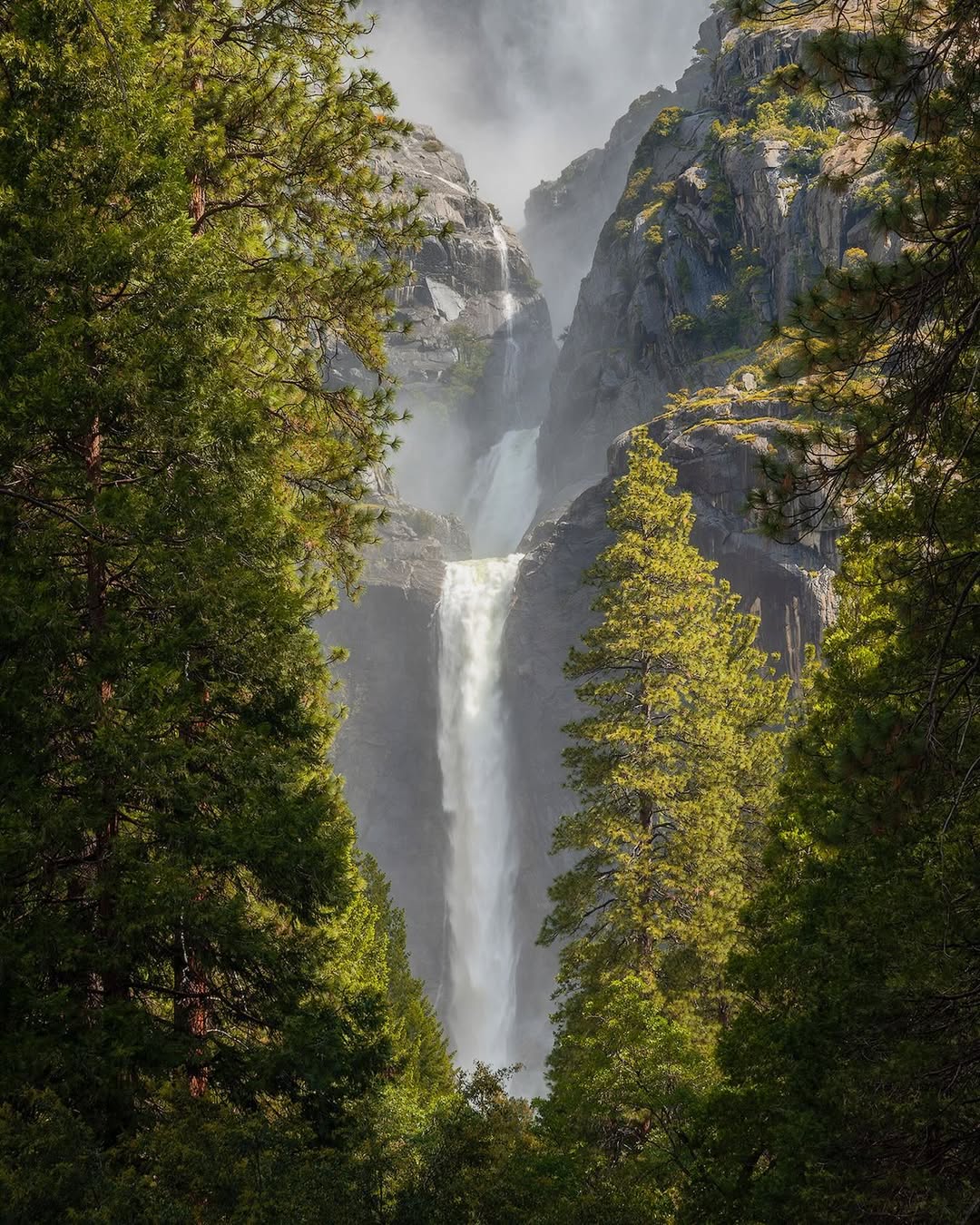
Make your way to Yosemite Falls, the tallest waterfall in North America.
Travel + Leisure says peak flow arrives between April and June, when melting snow turns every drop into thunder.
Pack a picnic and spread out in Sentinel Meadow, where Half Dome reflects on still water and you can rest your legs before the afternoon climb.
If you’re short on time, skip the full upper trail and stick to the lower section—it’s quick, shaded, and just as rewarding. The sound alone clears your head.
Afternoon

Pull into El Capitan Meadow. On clear days you’ll spot tiny figures crawling up the granite face, bright ropes catching sunlight.
I once stood there with my camera ready, trying to track a climber until my neck ached—it’s hypnotic.
Later, wander the easy path to Mirror Lake. By late afternoon the crowds thin, and you can hear every footstep echo against the cliffs.
Evening
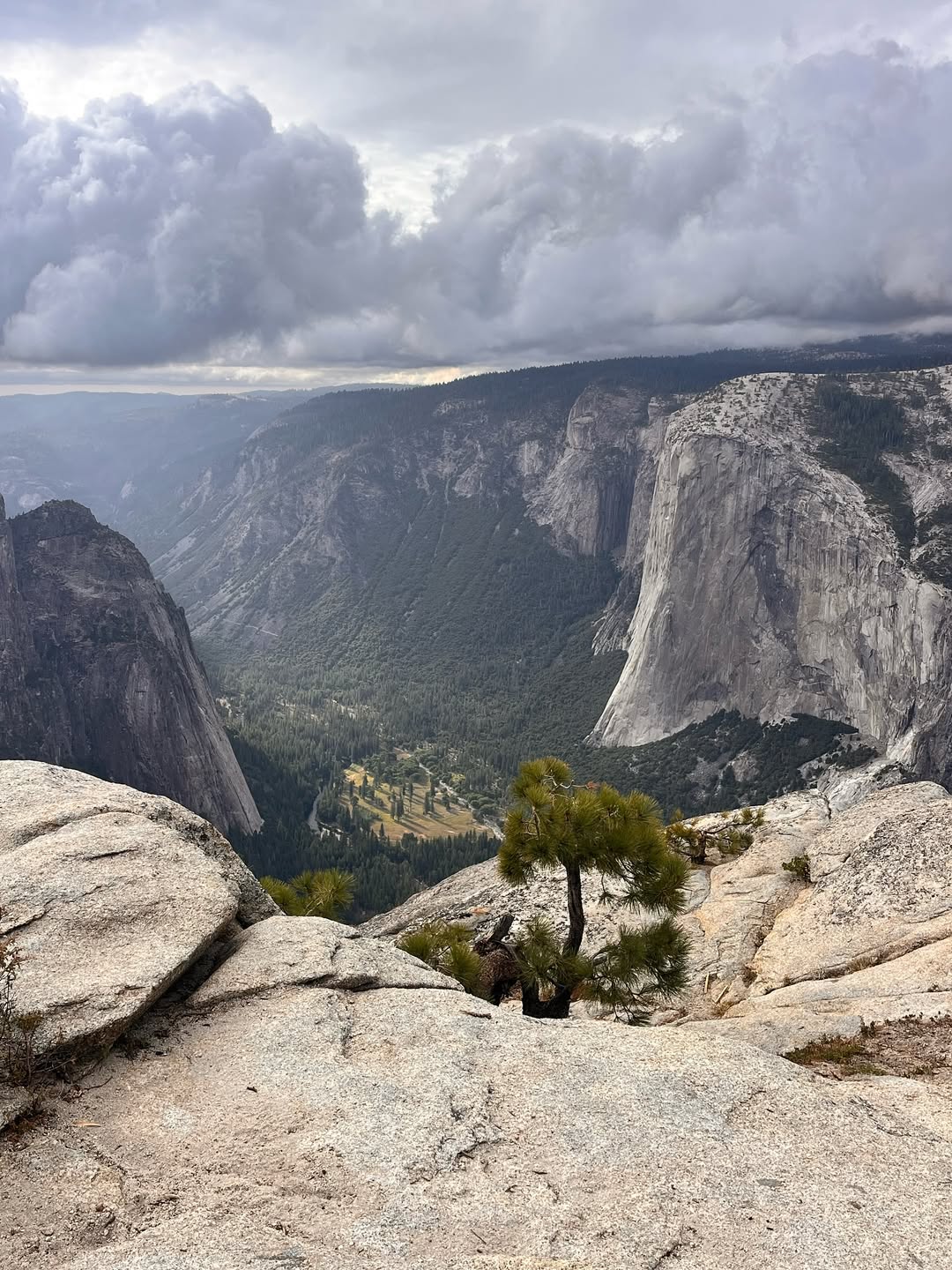
Drive toward Glacier Point or Sentinel Dome for sunset.
Recreation.gov notes Glacier Point Road may need a timed-entry pass during peak hours, so plan that ahead. The view at dusk feels almost unreal—the valley drops away, and you can trace the Merced River like a silver thread below.
Dinner inside the park is a treat. The Ahwahnee Dining Room keeps a rustic style without being stiff. If you can, book a table before sunset so you catch the last light through the tall windows.
As night settles, the crowds disappear. Stars slide over the granite peaks, and the whole valley hushes. Stay close if you can; sleeping inside the park saves time and lets you wake to birds instead of traffic.
Day 2 – Trails, Giants & Quiet Corners
Morning
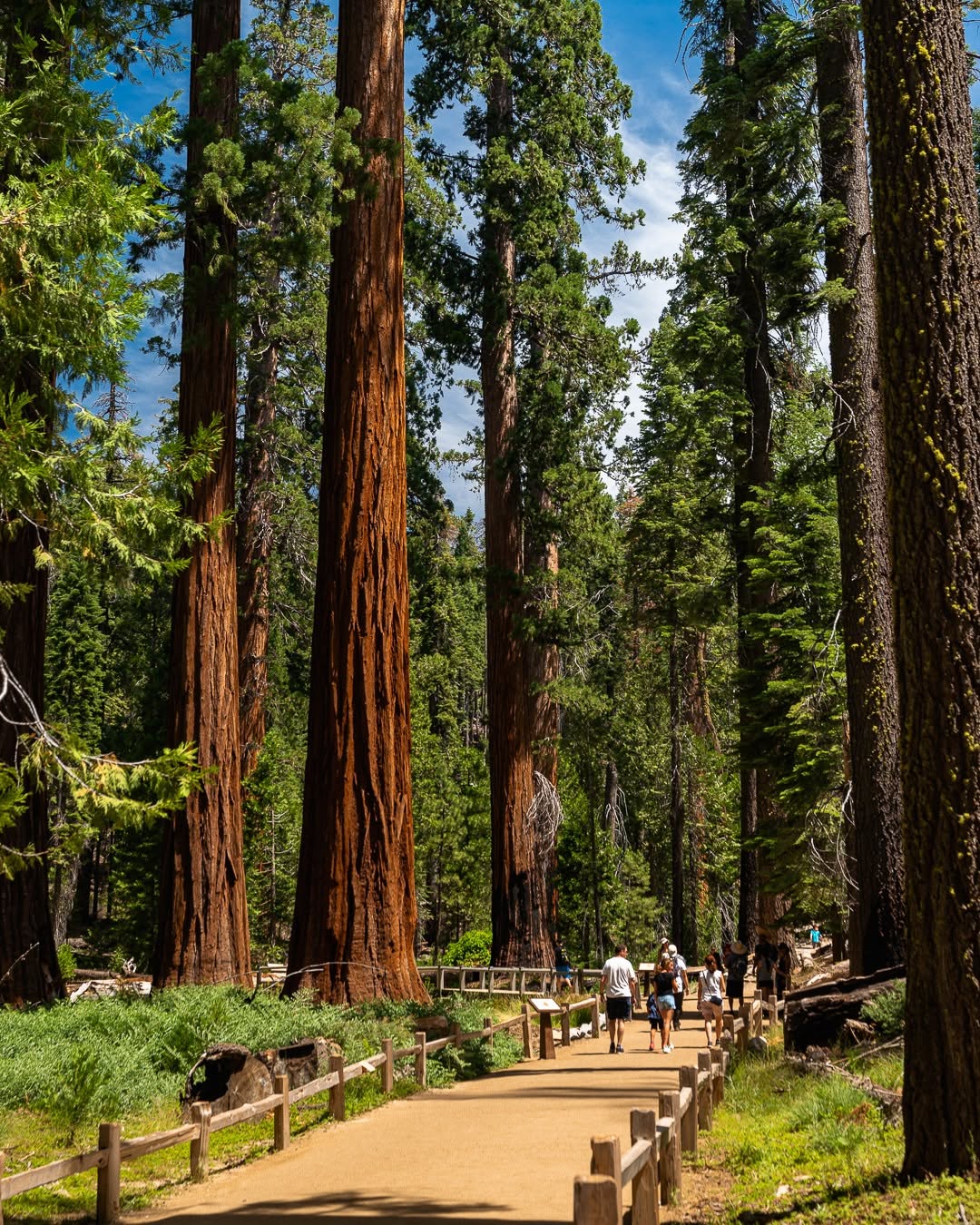
Wake early and drive to Mariposa Grove. Standing beneath sequoias that have been alive for two millennia changes your sense of scale.
Yosemite Conservancy suggests arriving before 9 a.m. to avoid the heavier foot traffic.
If you want more movement, head for the Mist Trail.
Lonely Planet lists it among Yosemite’s top short hikes for its spray-soaked climb beside Vernal Fall. Bring a poncho and enjoy the chill—getting wet here feels like a rite of passage.
Quick tip: wear shoes with grip; the rock stairs stay slick long after the sun hits them.
Midday
Grab a coffee at the Wawona Hotel porch before driving toward Tuolumne Meadows, if the road is open.
Caltrans reports Highway 120 usually opens late May and closes once snow returns. Up here the air thins, meadows stretch wide, and conversations drop to whispers.
Take an easy walk up Lembert Dome or rest beside Tenaya Lake. Both give you granite views without hard climbs.
When Tioga Road is closed, rent a bike in Yosemite Valley and circle the Merced River. The ride is flat, shaded, and full of quiet corners most visitors miss.
Afternoon
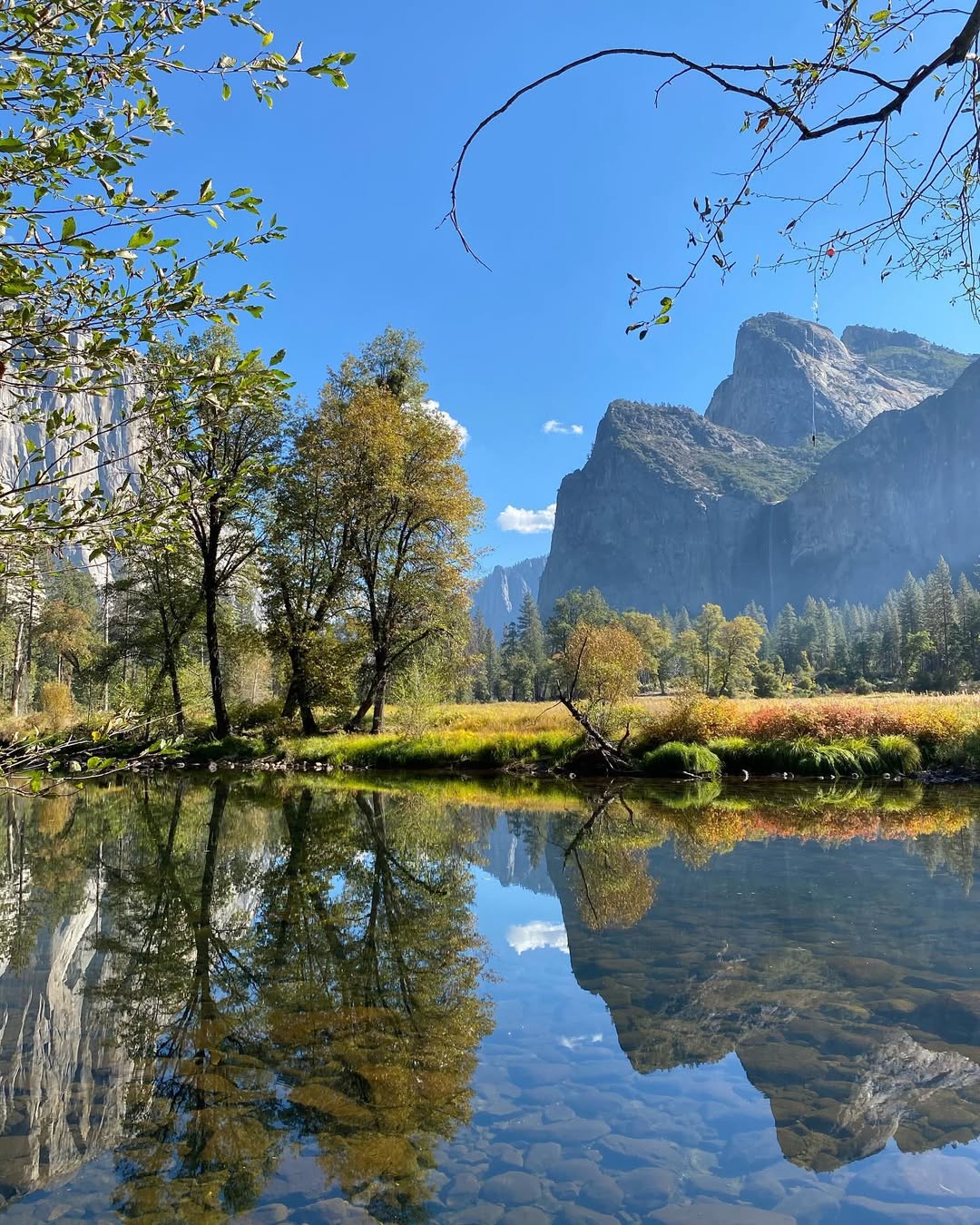
End your trip at Valley View, a quick roadside stop where the river mirrors the cliffs.
Visit California calls it the best place for reflections at golden hour, and they’re right—the light turns the water bronze.
Take a few minutes to stand still before heading out. You’ll hear the faint rush of water and realize how much ground you covered in just two days.
Evening
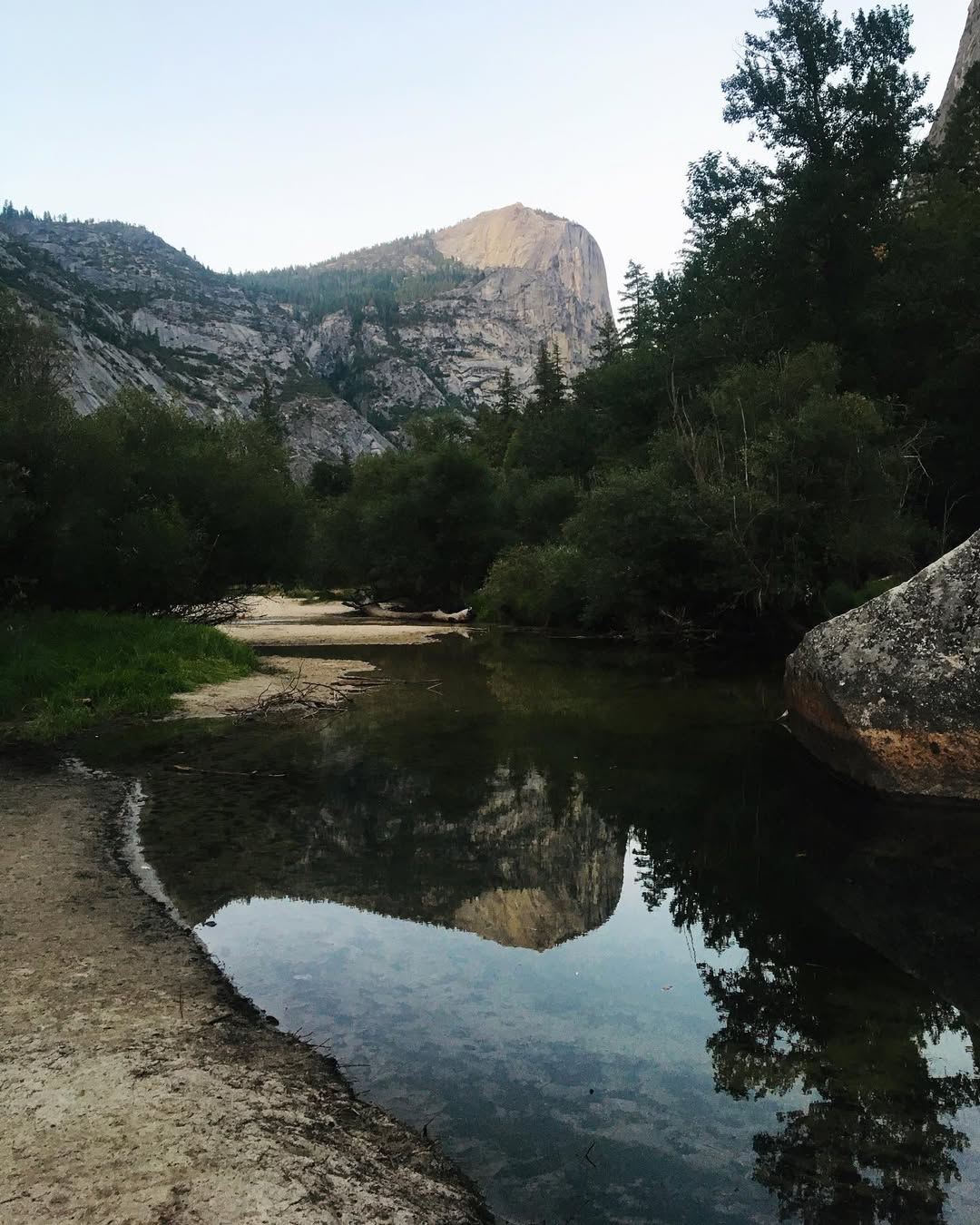
On your way out, stop in Groveland or Mariposa Town for dinner. I like ending with something casual—burgers, local beer, no hurry. The slower you move, the longer Yosemite seems to stay with you.
Trip Planning Tips (So You Don’t Waste a Minute)
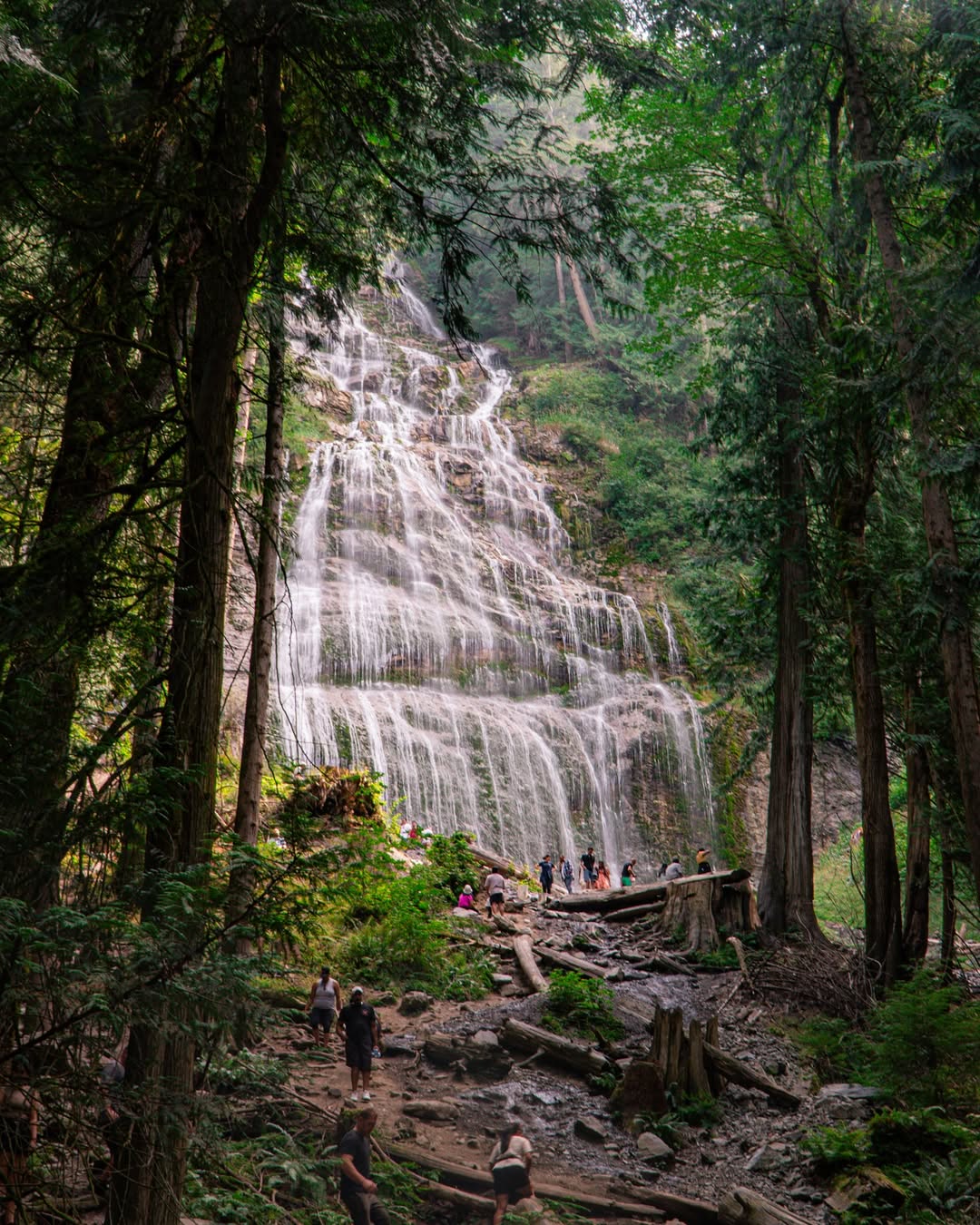
Planning a Yosemite weekend takes more than a map. A few smart moves can save hours and keep your trip stress-free.
Park entry: Timed reservations may be needed from mid-April to October. Book early, then relax knowing your spot is secure.
When to go: Spring brings roaring waterfalls; late September means warm hikes and fewer crowds.
Where to stay: Lodging inside the park cuts drive time, while gateway towns such as El Portal and Oakhurst stretch your budget without losing convenience.
Food storage: Bears learn fast. The National Park Service warns they can open cars in minutes, so always use the metal lockers provided at camps and trailheads.
Getting around: Free valley shuttles run every 12–22 minutes. YARTS buses link nearby towns year-round.
Safety: Download offline maps, pack water, and carry a flashlight; signals fade once you leave the valley floor.
Every minute you save on logistics gives you another minute in nature — and that’s the point of being here in the first place.
What to Pack for 2 Days in Yosemite

Pack light but stay prepared: breathable layers, refillable bottle, sunscreen, portable charger, and shoes with grip. A small first-aid kit and sealed snacks cover the rest.
If you’re traveling solo, clip a whistle to your pack and share your route before you set out. The park has more than 750 miles of trails—enough to get turned around fast if you wander off path.
Keep everything in one daypack so you can jump from trail to viewpoint without repacking.
That little bit of freedom makes the trip flow smoother and keeps you open to those unplanned stops that end up being your favorite memories.
Read more: Building the Perfect Travel Kit: Genius Essentials. You’ll need these when traveling to Yosemite.
FAQs About a 2-Day Yosemite Itinerary
How early should I enter the park?
If you want to catch sunrise at Tunnel View or Glacier Point, aim to enter by 5:30–6:00 a.m. The park gates open 24 hours, but early entry helps you beat both crowds and parking stress.
Can I see Yosemite’s top spots without hiking?
Yes. Tunnel View, Glacier Point, El Capitan Meadow, and Valley View are all easy to reach by car. You can still get the full sense of Yosemite’s size without a strenuous trail.
Is 2 days really enough for Yosemite?
It can be, if you plan right. Focusing on Yosemite Valley, Glacier Point, and either Mariposa Grove or the Mist Trail gives you a strong mix of views, waterfalls, and ancient trees without rushing.
Do I need to reserve entry ahead of time?
From mid-April to October, timed reservations are required on peak days. Recreation.gov handles the passes, and you can book up to seven days ahead.
What’s the best month for waterfalls?
Snowmelt peaks around May, which means the waterfalls roar the loudest between late April and early June. By fall, many dry to a thin ribbon, but the park is quieter and great for hiking.
Where should I stay overnight?
If you can, stay inside the park—places like Yosemite Valley Lodge or Curry Village make mornings easier. Outside the park, El Portal and Oakhurst have affordable rooms and food spots that stay open later.
Can I visit Yosemite in winter?
Yes, but expect some road closures. Tioga and Glacier Point Roads close once snow builds up. On the bright side, the valley stays open year-round and looks magical dusted in snow.
Is it safe to travel solo in Yosemite?
Absolutely, with smart planning. Share your plans with someone, stay on marked trails, and carry a whistle or small light. Rangers are friendly and used to helping solo travelers navigate routes safely.
Final Thoughts: Why Yosemite Feels Bigger Than a Weekend
Every time I leave Yosemite, I feel like the park stays with me a little longer. It’s not just the views—it’s the quiet, the sound of waterfalls behind you, the way starlight hits granite at night.
Two days might not sound long, but it’s enough to reset your pace and remember what still feels real. Whether you’re hiking solo or road-tripping with friends, Yosemite reminds you to look up, breathe slower, and notice more.
If this guide helped you plan your trip, I’d love to hear from you. Drop a comment below and tell me what part of Yosemite you’re most excited to see—or share your own weekend story. Every traveler sees this park a little differently, and that’s what makes it timeless.


